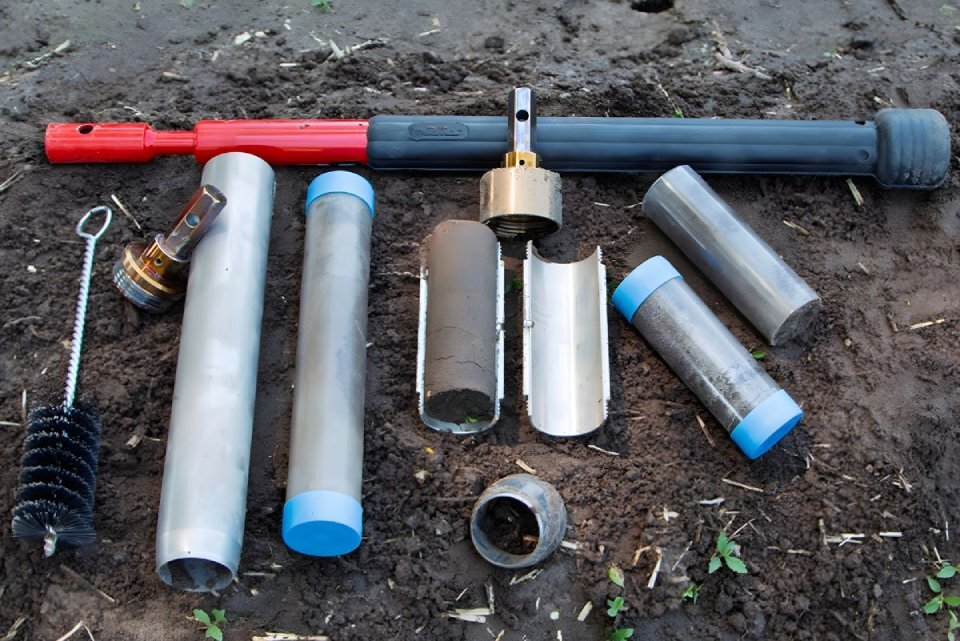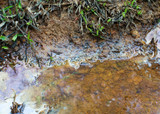7 Soil Sampling Techniques: Basics to Advanced Tools
Understanding soil composition is essential for scientists, engineers, and remediation professionals. The tools and techniques you choose to collect soil samples can greatly impact the accuracy of your results. Below, we explore soil sampling techniques and tools, from basic to advanced, to ensure your sampling process is efficient and effective.
Hand Probing: A Simple Start
Hand probing is a simple soil sampling technique that involves using a soil probe to collect surface samples, usually from depths of 0 to 12 inches. It’s particularly useful for initial surveys or for soft soils, as it requires minimal effort to penetrate the ground. This method provides a quick way to assess topsoil conditions, making it valuable for agricultural studies or environmental screenings.
However, hand probing falls short when dealing with rocky or compacted soils and isn’t suitable for deeper analysis. Despite these limitations, it offers a cost-effective option for gathering preliminary data before progressing to more thorough and complex sampling methods.
Shovel Excavation for Visual Profiling
Shovel excavation involves digging trenches or pits to visually inspect soil layers. This technique offers valuable insight into the structure of the soil and allows for the manual collection of soil samples from various depths. It’s particularly beneficial for detecting contaminants, organic layers, or compacted areas.
Although shovel excavation offers a hands-on understanding of soil composition, it can be labor-intensive and disruptive to the surrounding environment. Furthermore, it doesn’t allow for precise, relatively undisturbed samples. For small-scale projects, such as site assessments or localized remediation efforts, shovel excavation remains a reliable, low-tech option.
Soil Augers: A Workhorse Tool
Soil augers, commonly referred to as bucket augers, are versatile tools designed for sampling in various soil types. These cylindrical augers feature cutting teeth that dig into the soil as they rotate manually. Bucket augers are excellent for reaching depths of several feet and are effective in handling loose, sandy, or cohesive soils. Their ability to capture and retain soil samples in the cylinder minimizes loss during extraction. As a result, bucket augers are indispensable for agricultural, geotechnical, environmental, and groundwater studies and investigations.
Additionally, soil augers offer a high level of accuracy, making them a preferred choice for professionals working in the field. Their design allows for consistent sampling, which is crucial for obtaining reliable data, whether it’s for soil fertility assessments, contamination testing, or geotechnical analysis. The ease with which bucket augers can be transported and operated in remote or challenging locations further enhances their use, allowing researchers and engineers to collect samples with minimal disruption to the surrounding environment.
Soil Coring With Tube Samplers

Tube samplers (also referred to as soil core samplers or split soil core samplers), are designed to collect relatively undisturbed soil cores, which are precise samples for detailed analysis. These samplers are particularly useful in agricultural, geotechnical, and environmental studies, where factors like soil moisture content and structural integrity are critical. They are also useful in environmental sampling, where volatile organic compounds (VOCs) must be preserved so they can be tested.
The process involves driving a cylindrical tube into the ground using either manual or mechanical force. The soil core is retained within the tube, or a liner, preserving its layers. This method is advantageous for studying subsurface conditions to assess contamination levels and soil stability. However, tube sampling requires a certain level of expertise and is generally limited to softer or moderately compacted soils.
Trench Sampling for Large-Scale Studies
Trench sampling involves excavating large sections of soil to expose stratification and collect bulk samples. Commonly used in the mining and construction industries, trenches provide an opportunity for direct observation of soil structure and composition, which provides valuable information on soil stability and compaction. Although it yields detailed data, this technique is highly invasive and unsuitable for sensitive or protected sites. Additionally, it’s crucial to enforce proper safety protocols during trench sampling to prevent accidents or collapses.
Direct Push Technology

Direct push technology uses a hydraulic percussion hammer to drive soil sampling tubes into the ground, minimizing soil disturbance while quickly gathering samples. It’s effective for both shallow and deep sampling and excels in collecting continuous, relatively undisturbed core samples. This technology is especially useful in contaminated sites. However, the initial cost and ongoing operational expenses can be a barrier for smaller projects. Despite these costs, the precision and efficiency of direct push technology make it a preferred choice for large-scale geotechnical and environmental investigations.
Hollow Stem Augers for Contaminant Studies
Hollow stem augers are a specialized variation of hollow spiral augers, designed for soil sampling or the installation of monitoring wells in contaminated or unstable soils. They allow for the insertion of inner soil sampling tools and tubes or well screens while keeping the borehole open. This feature is especially useful when installing groundwater monitoring wells or soil vapor extraction wells. By preventing contamination between soil layers and ensuring accurate placement of a sand pack around the well, hollow stem augers are ideal for adhering to environmental regulations. Additionally, these augers are used in geotechnical site investigations to create a casing for split spoons and Shelby tubes for SPT sampling.
Although hollow stem augers are versatile and can work in conjunction with other sampling tools, their mechanical operation requires proper training and equipment, making them more suitable for experienced professionals.
Now that you know these soil sampling techniques, from basic methods to advanced tools, you’re better equipped to choose the right methods and soil core sampling tools for your projects. Remember that your choice of technique impacts the integrity of your findings, so invest in the right tools for the job.
Recent Posts
-
10 Reasons Testing Groundwater Is Important
Groundwater is one of the most valuable resources we have. It provides drinking water for millions a …November 20, 2025 -
Why You Should Regularly Check Termite Bait Stations
In industries such as agricultural or groundwater management, unseen threats can quietly undermine y …November 12, 2025 -
How the Mining Industry Uses Sediment Sampling Data
In mining, the decisions made before the first shovel hits the ground can determine the success or f …September 26, 2025




